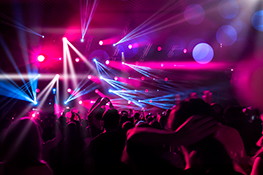Understanding the Fundamentals of Stage Lighting
Stage lighting is more than just illuminating a stage; it’s a powerful storytelling tool that shapes the audience’s perception of the performance. Whether you’re a beginner just starting to explore the world of theatrical lighting or a seasoned professional looking to refine your techniques, this guide will provide you with a comprehensive understanding of stage lighting essentials.
Types of Stage Lighting Fixtures
The world of stage lighting offers a diverse range of fixtures, each with its unique characteristics and applications. Understanding these differences is crucial for creating effective and impactful lighting designs.
- Fresnel: Known for their soft, diffused light, Fresnels are excellent for washes and creating a warm, inviting atmosphere. Their adjustable beam allows for precise control over the light’s spread.
- Ellipsoidal Reflector Spotlight (ERS): Offering a sharp, focused beam, ERS lights are ideal for highlighting specific actors or objects on stage. Their shutters and gobos allow for precise shaping and texturing of the light.
- PAR Can: Powerful and versatile, PAR cans are often used for backlighting and creating intense washes. Their simple design makes them cost-effective and easy to use.
- LED Lighting: Energy-efficient and offering a wide range of color temperatures and effects, LED lights are rapidly becoming the industry standard. Their long lifespan and reduced heat output are significant advantages.
- Moving Heads: These automated lights offer unparalleled flexibility, allowing for dynamic movements and effects. They are commonly used for concert lighting and special events.
Color Temperature and Gel Filters
Color is a fundamental aspect of stage lighting, influencing mood and atmosphere. Understanding color temperature (measured in Kelvin) and the use of gel filters is crucial for achieving the desired effect.
- Color Temperature: Lower Kelvin values represent warmer colors (e.g., orange, red), while higher Kelvin values represent cooler colors (e.g., blue, white).
- Gel Filters: These colored sheets of plastic are placed in front of the light fixture to modify its color, creating specific moods and enhancing the overall visual narrative.
Advanced Stage Lighting Techniques
Beyond the basics, mastering advanced techniques elevates stage lighting from functional illumination to a powerful artistic medium.
Lighting Design Principles
Effective lighting design goes beyond simply illuminating the stage. It involves understanding and applying fundamental principles such as:
- Motivation: Lighting should always have a reason, supporting the narrative and enhancing the emotional impact of the performance.
- Balance: Achieving a harmonious balance between light and shadow is crucial for creating depth and visual interest.
- Contrast: Using contrasting levels of light and shadow can emphasize specific areas or create dramatic effects.
- Color Psychology: Different colors evoke different emotions, and understanding this is key to using color effectively in your design.
Special Effects and Gobos
Special effects and gobos add another layer of creativity and artistry to stage lighting. Gobos (metal templates) are placed in front of the light source to project patterns and shapes onto the stage.
- Moving Lights: Used for dynamic effects, chases, and other visual spectacles.
- Follow Spots: Manually controlled spotlights that follow specific actors or objects across the stage.
- Fog and Haze Machines: Enhance the visibility of light beams and create atmospheric effects.
Choosing the Right Equipment for Your Needs
Selecting the right stage lighting equipment depends on factors such as budget, venue size, and the type of performance. Consider factors like wattage, light output, and control options when making your decisions.
Budgeting for Stage Lighting
Stage lighting can be a significant investment. Planning a budget that considers fixture costs, control systems, and potential maintenance is crucial. Explore options for renting equipment if purchasing is not feasible.
Control Systems and Dimmers
Controlling your stage lighting effectively requires a robust control system. Options range from simple manual dimmers to sophisticated computer-controlled systems.
This guide provides a foundation for understanding stage lighting. Explore stagelights.in for a wider selection of products and resources to enhance your lighting designs.


 Auditorium Construction Services
Auditorium Construction Services 